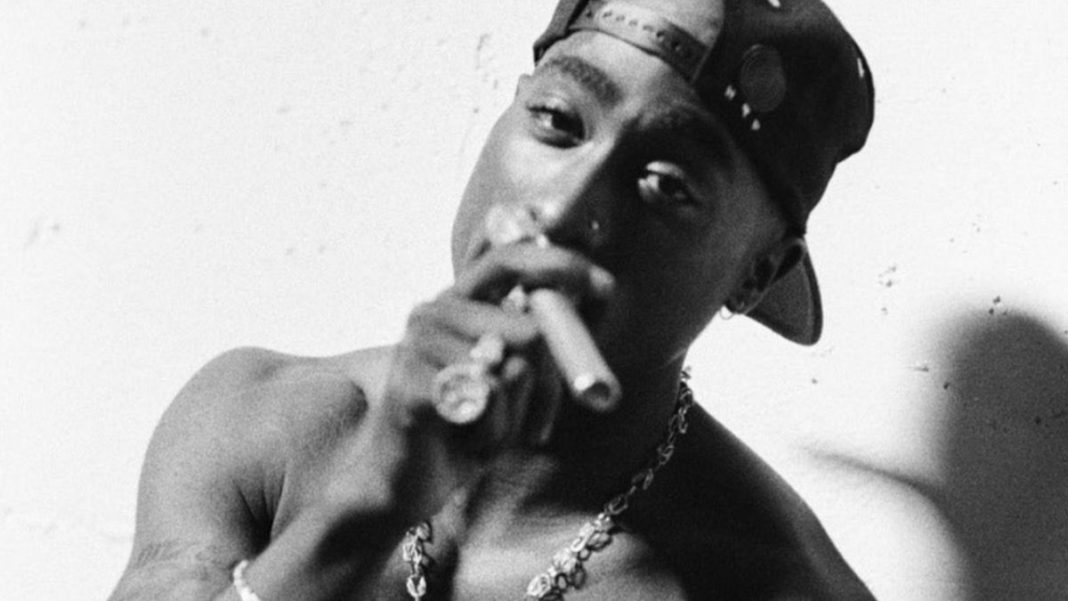UNITED STATES: An admitted ex-street gang leader was detained last Friday, facing a murder charge in connection with the shooting death of hip-hop icon Tupac Shakur in Las Vegas almost three decades ago, a long-unsolved crime that has remained a pivotal moment in the history of rap music.
Duane “Keffe D” Davis, who had long been a suspect and had started incriminating himself through public statements in recent years, was apprehended outside his residence a day after a grand jury in Clark County, Nevada, issued an indictment against him.
During a brief hearing on Friday, an indictment was presented to a judge, and as a result, 60-year-old Davis was ordered to be held in jail without bond until his initial court appearance scheduled for next Wednesday.
Davis is facing a charge of murder with a deadly weapon for his alleged involvement in leading a group of men in the fatal 1996 drive-by shooting of Tupac Shakur near the Las Vegas strip.
Authorities referred to Davis as the “shot caller” of a hasty plan to seek retribution for the assault on his nephew, Orlando Anderson, who had been attacked by Shakur and his associates inside the MGM Grand Garden Arena on the night of September 7, 1996, shortly before the shooting occurred.
Davis “orchestrated the plan that was carried out to commit this crime,” said Lieutenant Jason Johansson of the Metropolitan Police Department during a press conference. It was not immediately apparent if Davis had obtained legal counsel.
Police presented hotel security footage showing multiple individuals engaged in physically assaulting a person identified as Anderson near a bank of elevators before security personnel intervened to stop the altercation. Among those involved in the attack was Marion “Suge” Knight, who was the co-founder and then-CEO of Death Row Records, an LA-based record label that produced Shakur’s records.
According to Johansson, that incident ultimately resulted in the “retaliatory shooting death of Tupac Shakur.”
Following the altercation, Davis acquired a firearm from an unnamed associate. He, along with Orlando Anderson and two other individuals named Terrence Brown and Deandre Smith, got into a white Cadillac and headed out to find the black BMW that Knight had driven away with Shakur as a passenger.
When Davis and his associates caught up to the BMW, gunfire erupted from the Cadillac, targeting the passenger side of the vehicle. Shakur, who was struck four times, tragically succumbed to his injuries in a hospital six days later, at the age of 25.
Knight, who was grazed on the head by a bullet fragment and sustained minor injuries, was subsequently sentenced to prison the next month for violating the conditions of his probation from a prior assault case stemming from his involvement in the brawl at the MGM Grand.
Authorities did not reveal who specifically fired the gun at Shakur. All three individuals who were in the Cadillac with Davis have since passed away.
Christopher Wallace, a rival “gangsta” rap artist associated with the New York-based record label Bad Boy Entertainment, was fatally shot in Los Angeles in March 1997. To this day, his murder remains unsolved.
Wallace, known by his stage name Notorious B.I.G., had become entangled in a growing East Coast-West Coast rap rivalry prior to his death, and his killing was speculated to have been an act of retaliation for the murder of Tupac Shakur a few months earlier.
Johansson said that the violence at the MGM Grand stemmed from a deep-seated rivalry between two Los Angeles-area street gangs: the South Side Compton Crips, with Duane as their reputed leader, and Mob Piru, an affiliate closely connected to Death Row Records and Knight.
On the night of the shooting, members of both groups were present in Las Vegas to attend a world heavyweight title boxing match featuring Mike Tyson and Bruce Seldon.
Johansson noted that detectives had managed to piece together most of the details and individuals involved in the events leading up to the shooting within the initial months of their investigation. However, they had long struggled to gather admissible evidence to pursue criminal charges.
The case received renewed attention in 2018 due to “Davis’s own admissions to his involvement in this homicide investigation that he provided to numerous different media outlets.”
Davis, who has identified himself as a gang leader, openly admitted in interviews and in his 2019 memoir, “Compton Street Legend,” that he was present in the Cadillac from which shots were fired at Tupac Shakur’s vehicle.
This revelation prompted a renewed effort by law enforcement to resolve the case. In July, investigators obtained a search warrant for Davis’ residence, where they discovered additional evidence that ultimately led to the indictment, according to Johansson.
Shakur, a highly influential artist widely recognised as one of the greatest figures in rap music, was also incredibly successful commercially, with sales exceeding 75 million records worldwide.
He was renowned for his gritty lyrics filled with themes of sexuality, violence, and profanity, offering a gritty portrayal of life in the inner city. His album “All Eyez on Me,” released shortly before his untimely demise, celebrated his outlaw persona.
Adored by his fans and criticized by politicians for songs that at times glorified violence and misogyny, Shakur was no stranger to turmoil, having spent a significant portion of the last two and a half years of his life dealing with legal issues, periodic jail stints, or hospital stays.
Shakur, who arguably gained even greater popularity after his death, was posthumously inducted into the Rock and Roll Hall of Fame in 2017.
Knight, who served as his manager, entered a no-contest plea in a Los Angeles courtroom in September 2018 for his involvement in a 2015 hit-and-run killing in Compton, accepting a 28-year prison sentence as part of an agreement with prosecutors, just days before his murder trial was scheduled to commence.
Also Read: Donald Trump Found Responsible for Fraud in Civil Case in New York



